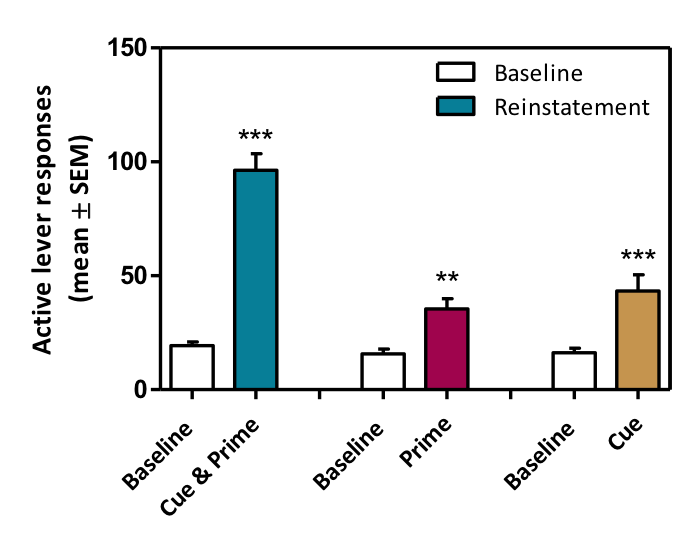Substance Use Disorders: Reinstatement model of drug relapse
To explore therapeutic interventions targeted at reducing the probability of relapse to drug taking following a period of abstinence, we use the reinstatement model of drug relapse in rats. In this model, rats are initially trained to self-administer the drug of interest, with each drug infusion associated with a cue such as a tone or light stimulus. Subsequently, following extinction of responding for the drug, responding can be reinstated through the presentation of the cues or the administration of a small priming dose of the drug of interest. The ability of a test compound to prevent this reinstatement is examined to understand the potential therapeutic efficacy. The model can be adapted depending on the mechanism of action of the test drug, and the proposed neural circuitry underlying the reinstatement response.
Drug-seeking for cocaine can be reinstated by presentation of a small dose of cocaine (Prime) or a light/tone stimulus previously paired with cocaine (Cue)

|
We also offer withdrawal alleviation approach, cessation of drug self-administration and locomotor sensitization
